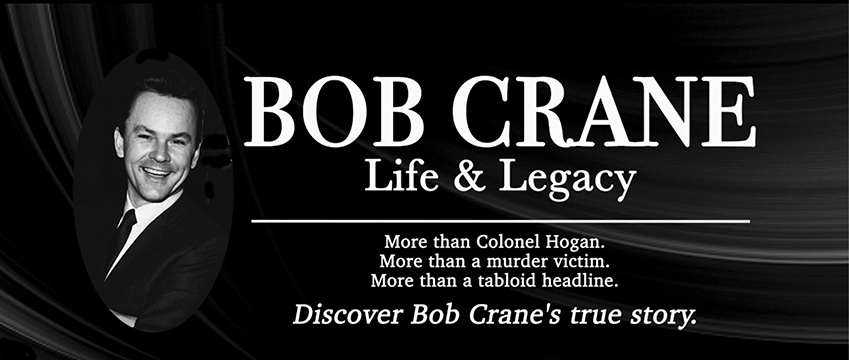 |
| Former site of the WICC studios and Channel 43. |
Bob Crane took on the responsibility of helping to launch the new station. In addition to preparing for and performing his 6:00 a.m. to 10:15 a.m. radio show, he dedicated himself to making Channel 43 successful.
Pilot, aerial photographer, and former WICC Art Director and traffic announcer (known locally as "Captain Traffic") Morgan Kaolian spent many hours working with Bob Crane on Channel 43. Broadcasting live on the new UHF station, the duo performed many improvisational shows that included, according to Kaolian, "some crazy stunts in the style of Ernie Kovacs." One of Morgan's favorite recollections is the day Bob came riding into the studio on horseback to the sounds of familiar Native American music.
 |
Crane and Kaolian ham it up on
Channel 43. Courtesy of
Morgan Kaolian and used
with permission.
|
With few televisions able to receive the UHF signal and the Federal Communications Commission (FCC) denying WICC's repeated request for a VHF band, Channel 43 eventually ceased broadcasting in December 1960. A few months later, a fire severely damaged the portion of the building that housed the former WICC studios. While the Channel 43 side of the building and transmitter (the "Hi-Ho" tower) still exist, the WICC side was demolished, and nearly all historic WICC recordings and Channel 43 footage were lost.
On August 19, 2008, Morgan Kaolian dedicated an hour of WICC air time to Bob. He talked about their friendship, their time spent working together at WICC and Channel 43, and Bob's successes in radio and television. "I knew Bob as a good musician; a very, very talented man on radio; and a just a great, all-around, fun-type guy," Kaolian said. He also took calls from WICC listeners, who remembered Bob Crane as a prominent figure in Bridgeport history.
Note: The first UHF television broadcasts in the world were conducted in 1949 in Stratford, CT, a neighboring town of Bridgeport, to test the viability of UHF for television broadcasting (M. Collins, "Timeline for Connecticut Broadcasting").
Note: The first UHF television broadcasts in the world were conducted in 1949 in Stratford, CT, a neighboring town of Bridgeport, to test the viability of UHF for television broadcasting (M. Collins, "Timeline for Connecticut Broadcasting").
